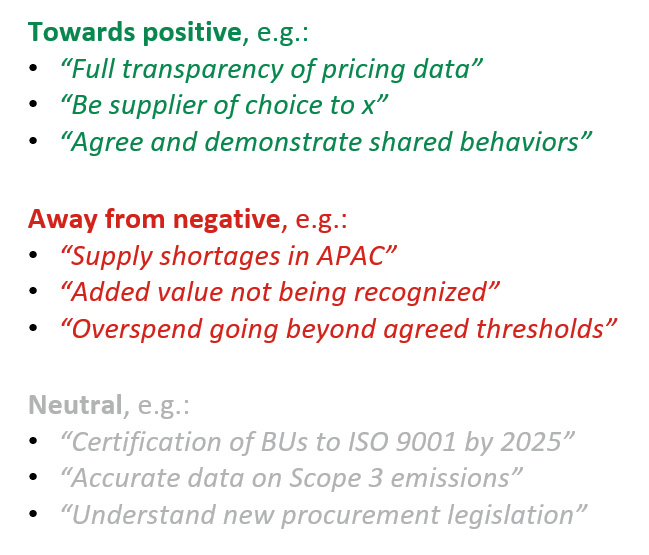Why “Things That Matter” really do matter: Part 1: What They Are

- Part 1: What are “Things That Matter”?
- Part 2: What are we currently doing?
- Part 3: Why aren’t the Things That Matter working?
- Part 4: What’s the alternative?
- Part 5: Why does it work?
“Things That Matter” is the foundation of our Value Management approach.
But it seems obvious what it means, and even more obvious that the Things That Matter are what everything we do should be centered on. So, what more is there to say? What does this add that people aren’t already doing? What are the big insights here?
This series answers these questions – and many others – to show precisely how and why the Things That Matter really do matter, and so let’s begin with what Things That Matter really are.
What are “Things That Matter”?
Put most simply, Things That Matter are anything and everything that make up Value in a situation.
That situation could be as specific as a particular relationship or project, or it could be as broad as an entire market or ecosystem, but in all cases the Things That Matter are the components or elements of Value in that situation.
Now, whilst “value” often ends-up being defined as price and cost, we’re using it here in its widest possible sense.
So, whilst the Things That Matter of course can – and usually do – include finances, they cover many other kinds of goal, and they can also be issues, ideas, risks, underlying principles and values, etc.
Just as with elements in the periodic table, there are therefore many “types” of Things That Matter, and they also combine and interact with each other – sometimes harmoniously; sometimes explosively.
They’re anything and everything that define or affect outcomes: the Things That Matter are the elements of Value.
(And whilst we’re introducing metaphors, another one we often use is that if dollars or pounds are the currency of price and cost, the Things That Matter are the currency of Value.)
But now let’s get more specific and consider the nature of Things That Matter – both individually and as a set.
The nature of Things That Matter: individually
Examples (on the right) hopefully make this all clearer, but the first aspect of the “nature” of each Thing That Matters is that it has one of three “outlooks”:

- Some are towards-the-positive: they’re about goals, targets, values to prioritize – “value creation”.
- Some are more away-from-the-negative: they’re risks, problems, concerns – avoiding loss of value.
- Some are in the middle or “neutral”: often driven by external factors, these are more the conditions or requirements around value.
Next, we see that – especially when they start to be articulated – each Thing That Matters is between abstract and actionable.
They’re recognizably about something, and so whilst they might start very high-level – e.g. “transparency” – they need to be applied to something to really have meaning.
Things That Matter are not abstract.
But then neither are they clearly or immediately actionable: something needs to be done, but what that is may not be clear… or it is clear, but there are lots of actions… or it’s somewhere in the middle, and there are choices to be made.
Either way, there’s more to them than a single action, and that then gives them a degree of persistence over time, even if that degree varies.
So, each Thing That Matters has an outlook, is between abstract and actionable, and has a degree of persistence over time.
What does that mean when we again consider the overall set of Things That Matter in any given situation?
The nature of Things That Matter: as a set
The first thing to note – reflecting the degree of persistence over time we just mentioned – is that the set of Things That Matter isn’t static: new ones emerge, progress gets made, priorities shift or things happen externally.
The Things That Matter therefore describe and reflect a moving target (Value): they change over time.
That’s one of the reasons why Things That Matter are then situation-specific.
Yes, there are recurring patterns, but you can’t just take the Things That Matter in one situation and assume they all apply in another – the differences matter.
In any set of Things That Matter, a majority is also usually also cross-boundary:
- Inside organizations, they typically cut across departments and lifecycle stages.
- Zooming out, they typically affect both parties in relationships, and some might even affect entire supply chains and ecosystems.
Even more important, though, is that many, if not most, of the Things That Matter will be significantly or wholly subjective, involving judgments, perceptions and intangibles.
As we’ll see later in this series, this is increasingly the case, but it poses increasing challenges…
…and this will become obvious in Part 2 when we look at what we’re currently doing (or not) to capture and focus on Things That Matter.

